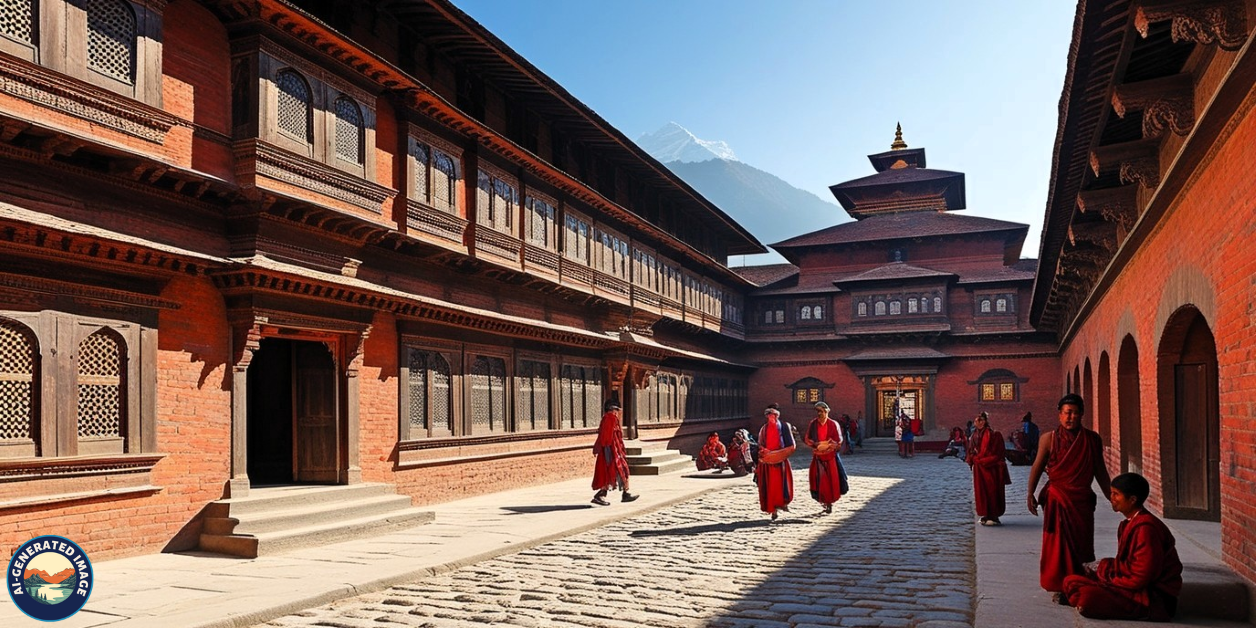Introduction
Located just a short drive from Kathmandu, Bhaktapur is a captivating city that offers a glimpse into Nepal’s rich cultural and historical heritage. Known as the “City of Devotees,” it showcases an enchanting blend of history, art, and spirituality. The city is a living museum where every corner tells a story, every street exudes charm, and every festival bursts with color.
Whether you’re fascinated by ancient temples, interested in traditional crafts, or simply looking to wander through medieval streets, Bhaktapur promises a journey through time.
Tracing the Origins of Bhaktapur
A Historic Beginning
Bhaktapur, also known as “Bhadgaon,” meaning the “City of Rice,” was founded in the 12th century by King Ananda Malla. Over the centuries, it became an important cultural and trade hub in the Kathmandu Valley.
The Golden Era
The city reached its zenith during the Malla dynasty when it became renowned for its architecture, art, and spirituality. Palaces, temples, and courtyards built during this period captivate visitors.
Preservation Through the Ages
Despite challenges such as natural disasters, Bhaktapur has managed to preserve its essence. Efforts by locals and organizations have played a vital role in maintaining its cultural and historical treasures.
Bhaktapur Durbar Square
At the heart of Bhaktapur lies Durbar Square, a majestic plaza filled with centuries-old monuments. This UNESCO World Heritage Site is a testament to the Newars’ artistic and architectural prowess.

Architectural Marvels
The square has palaces, temples, and courtyards, each with intricate carvings and stunning designs.
Key Highlights
-
The 55-Window Palace
: An architectural masterpiece featuring intricate wooden carvings, this palace is a symbol of Bhaktapur’s artistic heritage.

-
Vatsala Temple
: A beautiful stone temple accompanied by a famous bell that resonates throughout the square.

Iconic Temples
Bhaktapur’s temples are architectural masterpieces, each holding historical and spiritual significance.
Nyatapola Temple
This five-story pagoda, built in 1702, is Nepal’s tallest temple. It symbolizes stability and strength, with each tier guarded by stone figures of mythical creatures.

Dattatreya Temple
Dedicated to the trinity of Brahma, Vishnu, and Shiva, this temple is an exquisite example of Newari artistry.

Taleju Bhawani Temple
Built-in honor of the goddess Taleju, this sacred temple is open to the public only during specific festivals.

Cultural Festivities
Festivals in Bhaktapur are vibrant celebrations of faith, tradition, and community spirit.
Bisket Jatra
Celebrating the Nepali New Year, this festival is famous for its dramatic chariot processions and lively tug-of-war competitions.
Gai Jatra
This festival, dedicated to honoring departed souls, features colorful processions and participants in traditional attire.
Dashain and Tihar
These widely celebrated festivals bring families together for rituals, feasts, and elaborate decorations of homes and temples.
Masterpieces of Art and Craft
Bhaktapur is a hub of traditional craftsmanship, where skills passed down through generations are still practiced today.
Pottery
In Pottery Square, artisans mold clay into a variety of items, from decorative pots to everyday utensils. Visitors can watch or even participate in the process.
Wood Carving
The city is renowned for its intricately carved wooden artifacts, including doors, windows, and furniture, showcasing exceptional craftsmanship.
Thangka Art
This traditional form of painting is a hallmark of Bhaktapur, depicting religious symbols and deities with vibrant colors and intricate details.
Newari Cuisine
Bhaktapur is a haven for food lovers, offering a range of delicious Newari dishes.
Juju Dhau
Translated as “King of Curds,” this creamy, sweet yogurt is a signature delicacy of Bhaktapur.
Local Dishes to Try
From yomari (sweet dumplings) and bara (lentil patties) to chatamari (Newari-style pizza), the flavors here are unforgettable.
Where to Eat
Small family-run cafes and local restaurants serve these authentic dishes, often with a side of heartwarming hospitality.
Walking Through the Streets of Bhaktapur
Strolling through Bhaktapur’s narrow alleys is a sensory delight.
Medieval Streets
The cobblestone pathways are lined with ancient buildings that transport you back in time.
Markets and Local Life
The bustling markets offer everything from traditional crafts to fresh produce, providing a glimpse into daily life in Bhaktapur.
Hidden Corners
Beyond the main attractions, explore serene courtyards and lesser-known temples for a peaceful escape from the crowds.
Conclusion
Bhaktapur is a city that bridges the past and present seamlessly. Its majestic temples, vibrant culture, and artistic heritage create an unforgettable experience for visitors. Whether you’re marveling at its historic landmarks, savoring Newari delicacies, or enjoying its tranquil ambiance, Bhaktapur is a destination that leaves a lasting impression.
FAQs
-
What makes Bhaktapur special?
Its well-preserved medieval architecture, rich cultural heritage, and traditional craftsmanship make it truly unique.
-
Can you explore Bhaktapur in one day?
While you can see the main attractions in a day, a longer stay lets you delve deeper into its charm.
-
Is Bhaktapur suitable for family visits?
Yes, its safe environment and engaging cultural experiences make it ideal for families.
-
Do I need a guide to explore Bhaktapur?
While not mandatory, a guide can provide valuable insights into the history and significance of the city.
-
What is the best time to visit?
Spring and autumn are ideal, offering pleasant weather and the chance to experience local festivals.

